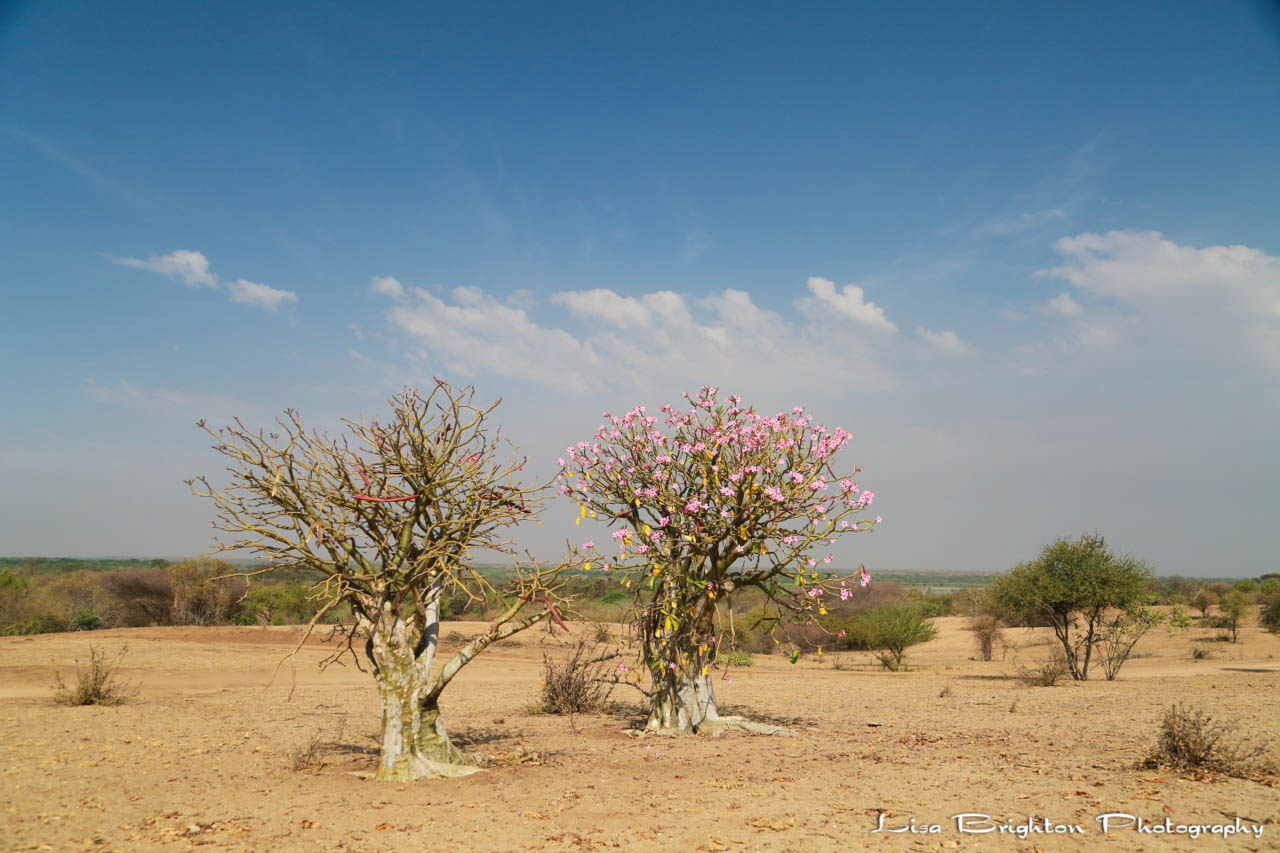5. Desert Rose
 “What’s the name of that pretty tree?” I ask Gare, my driver. “It’s the desert rose,” he says. “I think we’re stopping so you can take some pictures.” I look ahead to the first Land Rover and see that it’s pulling over. That’s the cue for the rest of the drivers in our seven-vehicle caravan to do the same. I feel a bit excited since I’ve never seen this species of tree. Its lovely pink flower blossoms are a welcome and uncommon site in the middle of this dry, hot Ethiopian savanna. A few days ago, I photographed a fairly common site here — a tree with traditional basket beehives in it. I learned about the
“What’s the name of that pretty tree?” I ask Gare, my driver. “It’s the desert rose,” he says. “I think we’re stopping so you can take some pictures.” I look ahead to the first Land Rover and see that it’s pulling over. That’s the cue for the rest of the drivers in our seven-vehicle caravan to do the same. I feel a bit excited since I’ve never seen this species of tree. Its lovely pink flower blossoms are a welcome and uncommon site in the middle of this dry, hot Ethiopian savanna. A few days ago, I photographed a fairly common site here — a tree with traditional basket beehives in it. I learned about the  farmers who produce honey from those beehives and that beekeeping is a growing business in this country. I was fascinated to learn how the farmers climb high up in the trees prior to the peak flower season to tie the hives to the tree branches, hoping they will be inhabited. After a three-month waiting period, the hives are checked for honeycombs, and the honey produced is primarily used to make “Taj,” an Ethiopian wine. Its high alcohol content is masked by the sweetness of the honey. I tasted it on my first night here, and my grogginess the next morning is a testament to the alcohol level. As I get a closer look at the blossoms, I think to myself that they are elegant in contrast to the bare branches of the tree next to it. Seeing anything with a blossom is a rare sight in the dusty savanna. I’m happy to see this touch of softness in the middle of this vast, open space.
farmers who produce honey from those beehives and that beekeeping is a growing business in this country. I was fascinated to learn how the farmers climb high up in the trees prior to the peak flower season to tie the hives to the tree branches, hoping they will be inhabited. After a three-month waiting period, the hives are checked for honeycombs, and the honey produced is primarily used to make “Taj,” an Ethiopian wine. Its high alcohol content is masked by the sweetness of the honey. I tasted it on my first night here, and my grogginess the next morning is a testament to the alcohol level. As I get a closer look at the blossoms, I think to myself that they are elegant in contrast to the bare branches of the tree next to it. Seeing anything with a blossom is a rare sight in the dusty savanna. I’m happy to see this touch of softness in the middle of this vast, open space.
